Estimated reading time: 10 minutes.
July/2018 – The YN85mm f/1.8 is the forth lens introduced by Chinese manufacturer Yongnuo to Canon’s EF mount. A brand known for it’s low-cost flash heads and LED light systems, they started producing DSLR lenses two year ago based on cloned designs to Canon’s and Nikon’s products; eliminating the cost of R&D, thus delivering cheaper prices. Both wide angle and standard YN35F2 ($99) and YN50F1.8 ($60) costs 1/2 and 1/3 of Canon’s nearly identical EF 35mm f/2 and EF 50mm f/1.8 II, and the YN100F2 ($160) copies the short-telephoto, wide aperture prime with and all-internal operation; despite also keeping the low cost. Now it’s Canon’s EF 85mm f/1.8 USM time to be cloned, another short-telephoto-wide-aperture lens used for portraits due to it’s short depth of field. But does Yongnuo delivers a similar experience? And coming from the mostly negative reviews of other lenses, can I finally recommend it? Let’s find out! Nice reading.

At 8.1 x 8cm of 460g of mostly plastics, metals, glass and a rubberized manual focus ring, the first thing we notice on the Yongnuo 85mm f/1.8 lens is, as usual, its design; closely resembling the “original’ EF 85mm f/1.8 USM. With the same 1990’s Canon’s ergonomics school, the Yongnuo balances the left hand grip on top of the manual focus ring, perfect to work with larger DSLR EOS cameras, holding the camera on both hands. The external barrel features the same width front and back, smooth to the touch also copying Canon’s plastic finishing; prone to scratching. However in a closer inspection we notice how the YN85F1.8 design is brand new, thicker than the EF lens, and that “cloned design” argument falls short. Thus a complete review is made necessary: we’re not talking about a cheaper knock-off, but an all-new product, with its own characteristics.
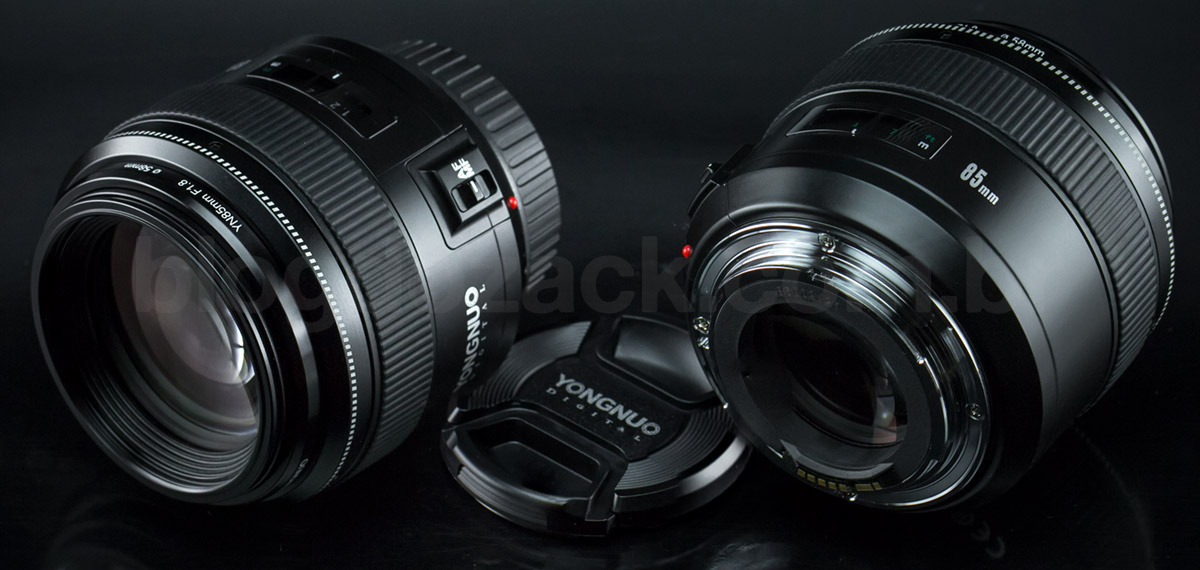
In your hands the YN85mm f/1.8 usability leaves a lot to be desired. Despite the manufacturer’s goodwill in including both aperture and focusing motors, not seem in other low-cost lenses, the YN85 usability feels raw, full of mechanical issues. The manual focusing ring, for example, feels “dry” and imprecise, with lots of play between the external and the internal movements, barely possible to adjust the shallow depth of field focus. While this ring supports the advanced “full time manual” operation, capable of adjusting focus even with the AF/MF switch left in auto, both are inconsistent. This switch barely sends the correct position to the camera’s electronics, and the AF/MF info blinks on screen; making it impossible to use. So it is bad when we’re on AF, because sometimes it fails; and it’s bad in manual mode, also failing to turn to motor off. Overall the YN 85mm f/1.8 is true to its low-cost: there are a lot of manufacturing issues with it.

Inside we’re presented with a plethora of issues: the auto focusing motor is loud; and the aperture speed is slow; both nearly incompatible with some EOS cameras. The aperture motor is the first time I see: it closes and opens the aperture so slowing that the camera’s timing gets all wrong; bizarre! It’s easy to see how it works by simply pointing the camera towards us, and the aperture is not instantaneous as Canon’s electromagnetic mechanism; a highlight on the market since the 80’s. On the EOS 5DS, for example, the cameras delays the shot under continuous shooting (5fps), as the lens can’t keep up. An using the EOS SL2 it gets worse: even on single shot mode the camera detects the slower lens aperture and error, displaying the “Err01″ communications message, when we stop the aperture down further than f/5.6. The camera needs a reboot to continue shooting, making the Yongnuo 85mm virtually incompatible with this EOS camera.

The autofocusing motor itself brings major limitations. While the YN100F2 issues were solved – that lens wouldn’t focus short distance compensations, nor was compatible with the continuous SERVO mode – the YN85mm is far from perfect. The micro-DC motor, for example, is very different from Canon’s USM. The Chinese lens uses noisy clogs to put the internal focusing group in motion, making a lot of noise; bad for intimate events. Despite the reasonable focusing speed and accuracy, great to speed-up most single shot photos, it can barely keep up with moving targets; despite being compatible with Canon’s SERVO mode. Here shown with the EOS 5DS, the camera drives the lens to the right direction (it didn’t on the YN100), enhancing the chances of properly focusing action sequences. But less than 10% of my photos came in focus (!) giving the 1) difficulties in focusing the shallow depth of field, 2) keeping up with fast paced subjects and 3) stopping down the aperture between shots. So once again it’s hard to recommend it: it just doesn’t work.

“Cyclist” with the EOS 5DS + Yongnuo 85mm f/1.8 at f/2 1/1000 ISO100.
If the aperture and focusing motor issues weren’t enough, the Yongnuo’s 85mm f/1.8 software is also badly implemented; incompatible with some EOS cameras. On both 5DS and classic 6D, for example, the YN85 can’t operate the Live View: in contrast mode, the lens seeks focus over the subject and locks at the wrong distance; useless! If you’re planning on using Live View to enhance the focusing precision on landscapes and product photography, it just doesn’t work. And the mirrorless cameras that depend exclusively on the Live View to work it gets worse: the Hybrid CMOS sensor on the EOS M, M2 and M3 (and Rebel cameras before the T6i) can’t focus at all. Once again the camera drives the lens back and forth, but it doesn’t lock focus.
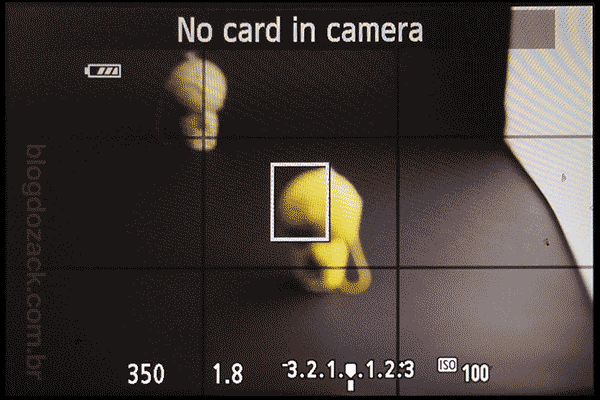
Curiously the Dual Pixel technology works near flawlessly with the Yongnuo 85mm f/1.8; perfect with recent EOS cameras. During the Live View operation of Canon’s EOS 7DII, 6DII, 5DIV, T7i, SL2, 80D and M5, the single and SERVO focus modes are fast; it doesn’t even feel like a low-cost lens. Here shown with the SL2, some action sequences with Avenida’s Paulista cyclists are completely in focus; that is a good surprise. While yes, some issues with the slower AF motor and the slower aperture mechanism can take away some of the usability, the Dual Pixel focus is much better than Canon’s various AF methods. So let’s summarize: the Yongnuo 85mm f/1.8 is compatible with the phase detection module under the mirror, seemed from the viewfinder in single and SERVO modes; it’s also compatible with Dual Pixel cameras in Live View, including mirrorless; but it doesn’t work well with older contrast detection modes (EOS 6D/5DS) nor the Hybrid CMOS (M, T6i).

“Cyclist II” with the EOS SL2 + Yongnuo 85mm f/1.8 at f/2 1/1000 ISO200.

Finally at front the YN85mmF1.8 accepts ø58mm filters that fit on a plastic thread; that itself fits inside the included-in-the-box lens hood. While this filter sits very high on top of the first glass element, prone to reflections, the YN-ET-65 lens hood does a good job in keeping stray light away from the lens; it looks a lot like the EF 85mm f/1.2 L II USM, only smaller. Actually the Yongnuo kit is lovely: it comes with a padded nylon case and the lens hood, accessories not included with the more expense Canon 85mm f/1.8 USM. At the rear the metal mount is finely finished with golden electronic contacts, supporting every semiautomatic exposure modes (P, Av, Tv) including the full EXIF data. And although it’s not a weather sealed lens (no rubber gaskets against water), the lens finishing feels better than most EF/EF-s lenses. What Yongnuo did, as usual, feels nice for its price on the low-cost market. It’s hard to see alternatives from the first parties, and it’s a good option for beginners. But its usability leaves too much to be desired, with issues varying from the focusing ring to the focusing switch to the aperture motor to the focusing; all very hard to recommend. But can you trust your best shots on the also low-cost optics? Let’s find out.

“Ipê” with the EOS 5DS at f/6.3 1/250 ISO100.
With an identical 9 elements in 6 groups optical formula arranged in a double-Gauss system, the Yongnuo 85mm f/1.8 performance is… curious. Just like the 35F2, the 50F1.8 and the 100F2 it is possible to make images with it: an interesting subject, the right moment and a good job with the lighting will surpass any optical shortcoming, and the best photographers have little to worry from even the worst camera. But Yongnuo’s chronic issues with sharpness and colors take away a huge part of the image’s quality, making it once again a tough recommendation to register life’s precious moments. The biggest problem lays on the lack of chemical treatments over the glass elements, different from Canon’s and Nikon’s expensive technology, making crystal clear images. So Yongnuo’s photos feels dull and muted, with blueish colors that are far from reality. And while the double-Gauss formula can keep lateral chromatic aberrations to a minimum, the axial CA is chaotic from the low quality glasses. I could praise it for it’s perfect geometry and pleasing out-of-focus qualities, but it’s hard to recommend it: it’s just too risky to make pictures with such a dubious lens.

“Reflectio” with the EOS 5DS at f/1.8 1/100 ISO160.
Wide open the Yongnuo 85mm f/1.8 simply doesn’t work. Here tested with both the EOS 5DS (50MP) and the EOS SL2 (24MP) it’s hard to swallow its optical performance at f/1.8; not by those taking photography seriously. Inside MAC’s Museum of Contemporary Art in São Paulo, no low-light low-contrast shots were sharp under 100% magnification. Details from textures, colors tones and the overall clarity we see from digital photographs are missing from Yongnuo’s files, and it makes little sense to have it on your kit. The image quality was so bad I decided to redo the tests at São Paulo’s zoo with the EOS SL2 during the day, and while some images felt sharper from the higher-resolution APS-C camera (it packs more pixels per square inch than the full frame sensor), other issues with axial aberrations and dull colors makes even the best photographs feel cheap. So it’s set to failure: bad glasses, bad optics, no details and weird colors.

Crop 100%, despite the precise focusing, there are no sharp image planes in this image.

Crop 100%, edge details, again with no plane in focus.

Crop 100%, lack of sharpness.
Stopping down helps the details at f/6.3-f/8, but doesn’t fix the dull colors and cloudy images; plus renders the aperture incompatible with some cameras. While landscape and product photography looks better from f/5 and up, with plenty of resolution even for the most demanding sensor, great for large format printing, it just doesn’t work with its bad colors and exposure errors. The headline goes to it’s perfect lateral CA geometry from the double-Gauss formula, great at eliminating any colored edges from strongly backlit subjects, like trees against the sky or window frames; guaranteeing high fidelity shots. But the strong axial CA are worse than Canon’s EF 85mm f/1.8 lens, making shallower depth of field images hard to fix even in post. So it simply goes against having a large aperture prime on your kit: it doesn’t work wide open and make the images look worse.

Crop 100%, compatible details with this generation’s digital cameras.
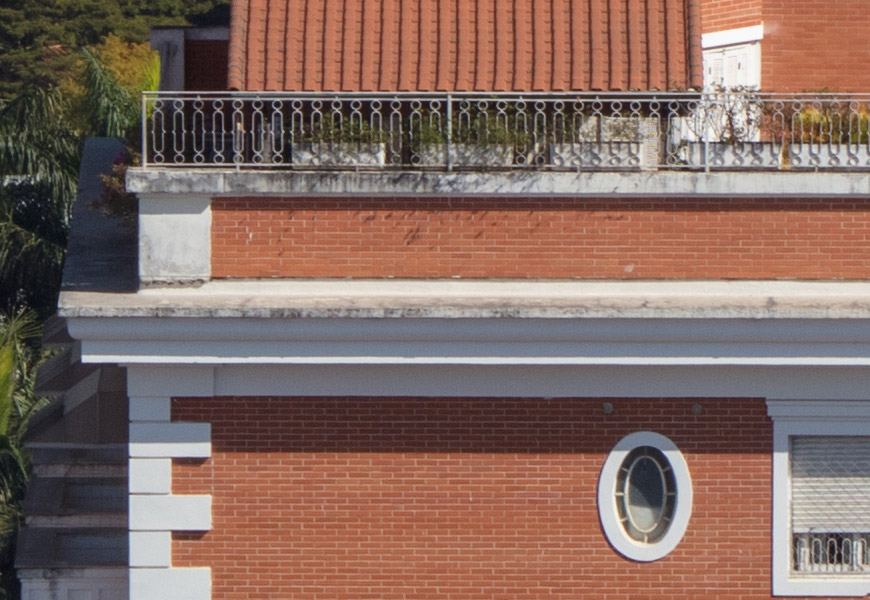
Crop 100%, ready to print files.

Crop 100%, but sometimes the focusing issues take away any image precision.
The image plane geometry and the out-of-focus quality of the Yongnuo 85mm f/1.8 are pleasing, and maybe its only qualities worth some recommendation. Most zoom lenses geometry lack the precision we get from primes, with either pincushion lines dropped to the center of the frame, or bulging lines towards the frame edges, that are perfectly straight from this 85mm prime; great to literally frame your subject within the lines of the composition. The out-of-focus background quality is also very pleasing, a strong case for the longer focal length and the wider aperture, just like the YN100F2. The Gaussian defocus makes strong high contrast lines and repetitive details disappear on a colorful background, even when stopped down from the 8-blade aperture; worth the recommendation for those looking for this style of images on they’re portfolio. But here comes the question: the perfectly good EF 50mm f/1.8 STM offers the same overall look, despite the much shorter focal length, and it won’t have mechanical Issues. Is the Yongnuo worth it? No.

“Flor” with the EOS SL2 at f/1.8 1/500 ISO100; pleasing background blur from the double-Gauss optics.
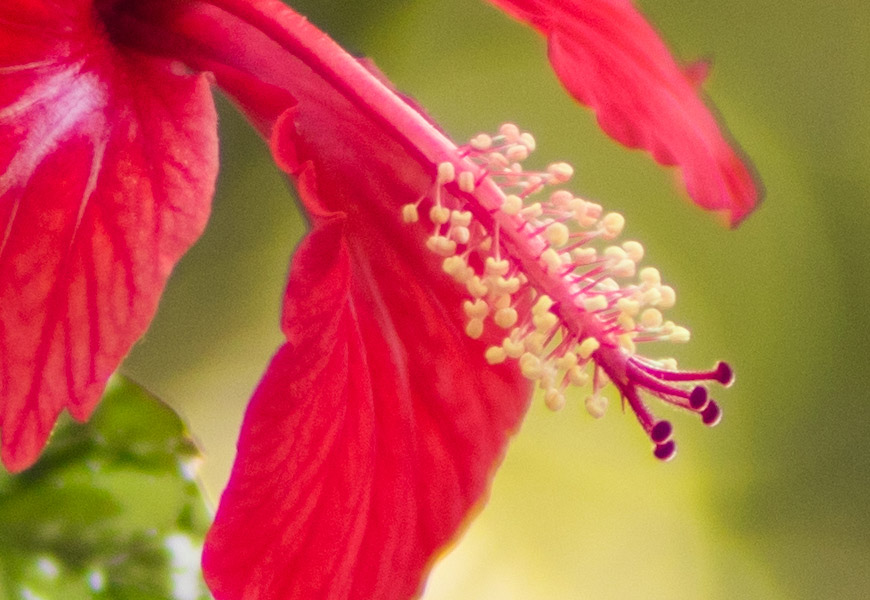
Crop 100%, slight axial CA plus the lack of sharpness, but the file works.
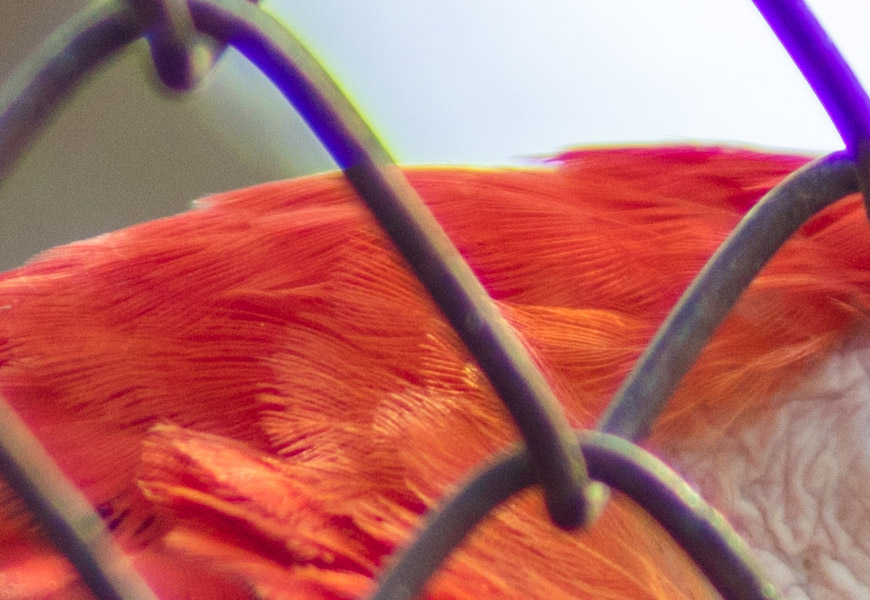
Crop 100%, an explosion of colors given the axial CA.
Finally the colors are Yongnuo’s last issue against the 85mm f/1.8 recommendation. The dubious optical quality and the low-cost absent chemical treatment pushes the colors to a blueish hue, impossible to compensate in post; making every indoor or outdoor shot look just wrong; specially the skin colors. It doesn’t work: white balance, gradient maps and saturation sliders won’t help. Photos taken under strong sun light make trees, flowers and even the sky look dull. Product tones, textures and sharp graphics simply “bounce back” the low quality glasses, for poor fidelity photos. And the skin tones are nearly unfixable: lighter caucasian tones feel lifeless; darker tones are blueish; and African complexions looks gray. It might work for black and white files, but just barely. It’s the final straw on the Yongnuo’s recommendation: don’t risk your photos for a few extra bucks!
The Yongnuo 85mm f/1.8 is, once again, and interesting lens to review on blog do zack. While I admire the Chinese desire to offer a comprehensive lineup of large aperture primes with automated operation never seen at this price point, the mechanical issues together with the terrible optics are simply not worth the cheaper price. This 85mm surprises us for the weird AF/MF switch; the noisy autofocusing motor; and the nearly incompatible aperture system; impossible to recommend even for the smallest budget. And while I can live with its lackluster optical performance of poor color reproduction and lack of details, honestly if you’re looking for shallow depth of field or large aperture exposures there are better first parties alternatives like the EF 50mm f/1.8 STM. This Yongnuo risks your better shots for a few extra bucks. So it’s hard to recommend it, even for the low-cost market. Just get a better lens and nice shooting!